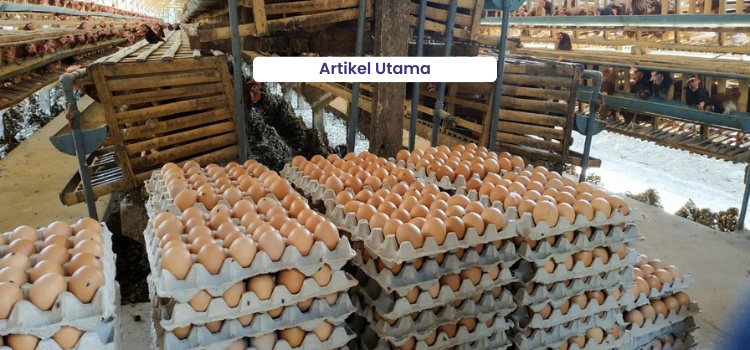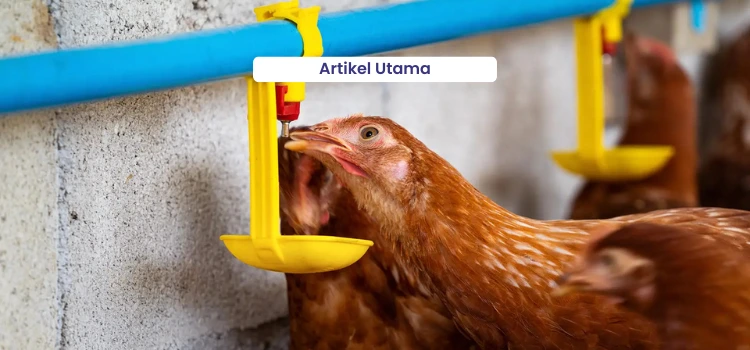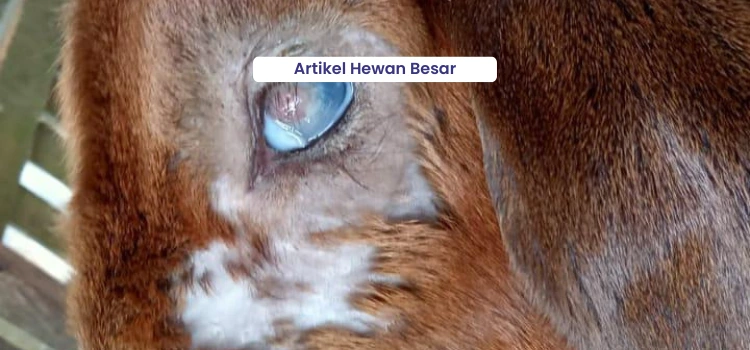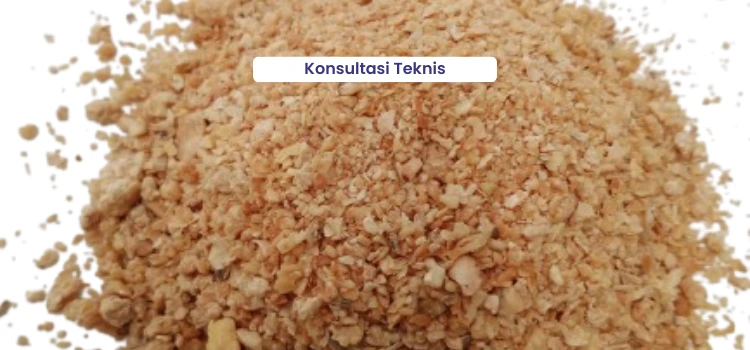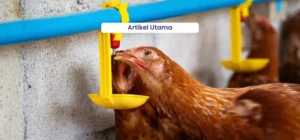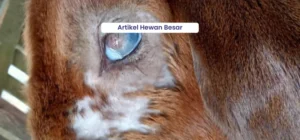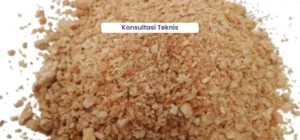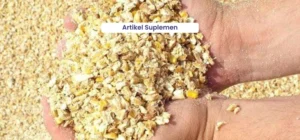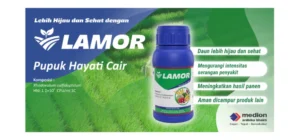The development of commercial layer (egg-laying chicken) farming in Indonesia shows good prospects, especially when viewed from the aspect of society's need for nutrition. This nutritional fulfillment, especially animal protein, can be obtained, among other sources, from egg protein. Thus, the layer farming business still holds good potential for development. Moreover, due to fluctuations in supply and high demand, egg prices are always changing. Typically, leading up to Eid al-Fitr or other major holidays, egg prices soar, sometimes reaching up to Rp. 32,000 per kg.
The success of achieving egg production is assessed by its quality and quantity. To achieve both of these success parameters, the process of fulfilling rearing management must be done optimally. So far, many farmers still face various problems that impact the decline in egg production, both in terms of number and quality. Many factors can be the cause, consisting of infectious factors (diseases) and non-infectious factors (chick quality, nutritional adequacy, environmental conditions, and rearing management).
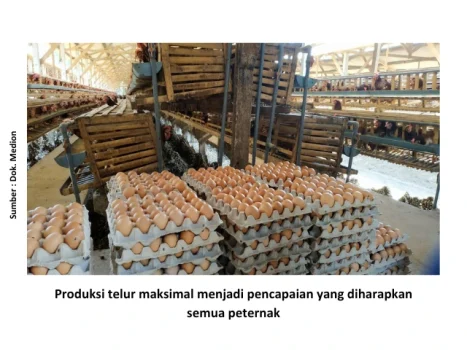
Viral Diseases that Hinder Egg Production
Specifically related to infectious factors, a drop in egg production due to disease outbreaks is not something that should be underestimated. Disease factors are considered one of the main causes of the decline in egg production in layer chickens. Diseases cause various organ dysfunctions, whether in the digestive, respiratory, nervous, or reproductive systems, which are directly related to egg production. Among the many diseases that can affect the decline in egg production, the following viral diseases cause a significantly high impact on layers: ND, AI, IB, EDS, and the increasingly prevalent SHS outbreaks. Let's delve into these diseases.
Newcastle Disease (ND)
Newcastle disease (ND) is a common viral disease that frequently infects poultry, especially chickens. This disease, caused by the Paramyxovirus-1 (APMV-1) virus, causes respiratory, gastrointestinal, neurological, and reproductive system disturbances, leading to up to 100% mortality in unvaccinated chickens. The ND cases widely found almost all over Indonesia are Subtypes GVII h and GVII a/i. This viral disease can cause a decline in egg production, diarrhea, shortness of breath, and neurological abnormalities. In layer chickens, ND can strike both before production (0-17 weeks) and during the production period (18 weeks-culling). The losses incurred include high morbidity and mortality (which can reach 80-100%) along with disturbances to the reproductive organs. In the reproductive system, inflammation and a soft, cauliflower-like appearance of the ovary are found. Quantitatively, egg production decreases variably from 7% to 60%; in terms of egg quality, eggs from ND-infected chickens are usually pale with small size, known as pigeon eggs.
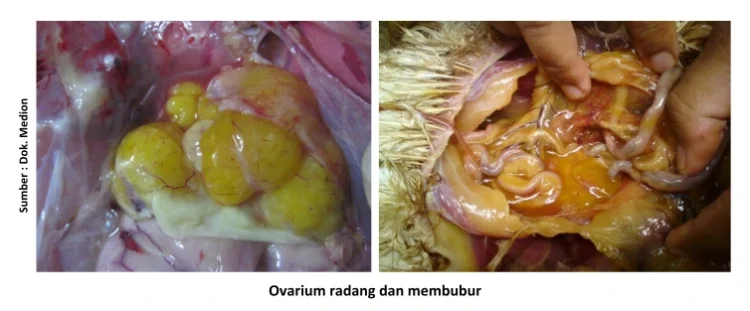
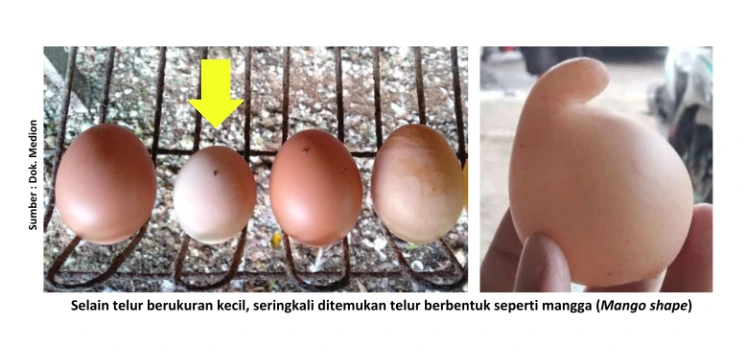
Avian Influenza (AI)
Current AI outbreaks are dominated by LPAI attacks, specifically subtype H9N2, which tends to target the reproductive system and, in a single AI H9N2 infection, does not cause high mortality rates. This viral disease can cause a 20-50% drop in egg production, lethargy and pallor in chickens, difficulty breathing, and mucus discharge from the nose and mouth. Avian Influenza (AI) is caused by a virus belonging to the genus Orthomyxovirus, which is easily destroyed by heat, sunlight, organic solvents, detergents, and various disinfectants. As it develops, the AI virus has 2 mechanisms for disturbing the chicken's reproductive organ: the congestion of blood vessels in the ovary and damage to the ovarian surface during budding exit (the virus exiting the host cell). Both mechanisms will result in a decrease in production and failure to reach peak egg production. AI infection also affects egg quality, as its attack causes the eggs to lose their pigment, resulting in paler shell color
Serangan AI saat ini didominasi serangan LPAI yakni subtipe H9N2 yang cenderung menyerang sistem reproduksi dan pada serangan tunggal AI H9N2 ini tidak menimbulkan angka kematian yang tinggi. Penyakit viral ini dapat menyebabkan penurunan produksi telur 20-50%, ayam lemas dan pucat, kesulitan bernapas, dan lendir keluar dari hidung dan mulut. Avian Influenza (AI) disebabkan oleh virus yang termasuk dalam genus Orthomyxovirus yang memiliki karakteristik mudah mati karena panas, sinar matahari, pelarut organik, deterjen maupun berbagai golongan desinfektan. Pada perkembangannya, virus AI memiliki 2 mekanisme dalam mengganggu organ reproduksi ayam, yaitu pembendungan pembuluh darah di ovarium dan rusaknya permukaan ovarium pada saat budding exit (keluarnya virus dari sel inang). Kedua mekanisme ini akan mengakibatkan penurunan produksi dan tidak tercapainya puncak produksi telur. Infeksi AI juga mempengaruhi kualitas telur dimana serangannya menyebabkan telur kehilangan pigmennya sehingga warna kerabang menjadi lebih pucat.
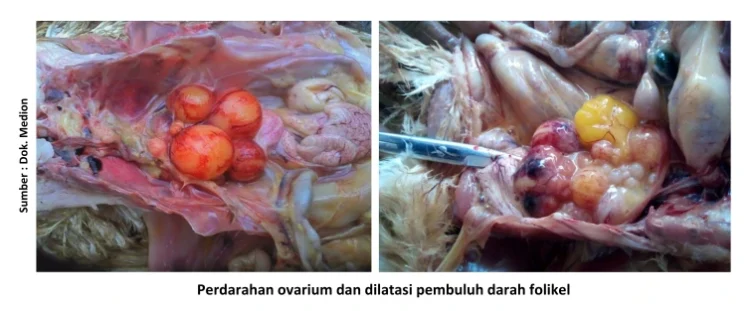
Infectious Bronchitis (IB)
This disease attacks the respiratory area in chickens and can cause a decline in egg production. IB symptoms include rattling, sneezing, and light coughing. Infectious Bronchitis is caused by a virus belonging to the genus Coronavirus. IB cases in Indonesia consist of classic and variant strains. The variant IB case that has entered Indonesia is the QX-like strain. Chickens of all ages are susceptible to IB attacks. Young chickens that recover from IB experience stunted growth and production. Their reproductive tract can suffer severe damage, making layer chickens unable to produce eggs. In adult layer chickens, a rattling sound is heard during breathing, and egg production drops by 10-50%.
More specific symptoms seen in chicken eggs include asymmetrical shape, rough or thin and pale shells, watery albumen (white), and blood spots in the yolk. After the chicken recovers, egg production will rise again but remains below standard; the ovaries are underdeveloped, soft like porridge, bloody, swollen, and flabby. Furthermore, cases of yolk rupture in the abdominal cavity are often encountered. In IB cases caused by the QX strain, a change of oviduct dilation containing clear fluid (cystic oviduct) is observed. This can be clinically detected if the incident has been prolonged (chronic), with the chicken's abdomen appearing enlarged and the chicken walking with its head tilted up like a penguin.
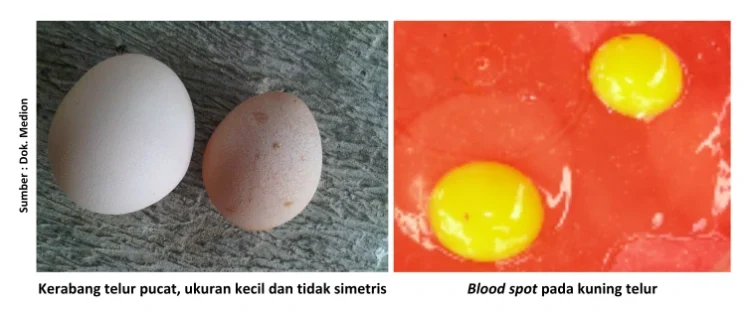
Egg Drop Syndrome
This disease is caused by Adenovirus type I and results in eggs produced having thin shells or no shells at all. Egg Drop Syndrome is caused by a virus belonging to the genus Adenovirus. The disease strikes chickens a few weeks before and after reaching peak production. The drop in egg production reaches 10-40% with very low or no mortality. In EDS virus infection, affected chickens appear healthy and show no symptoms of illness, but a very drastic drop in production occurs, accompanied by a decline in egg quality. Moreover, EDS also causes the brown pigment color on the eggshell to disappear, followed by thin, soft, and shell-less eggs. Other symptoms seen include a failure to reach peak production or a delay in egg-laying time. Eggs produced by EDS-affected chickens can also be a transmission medium because the eggs, both inside and on the surface, contain the EDS virus. This virus can contaminate the coop, egg trays, and other farm equipment, and can infect healthy chickens. Upon post-mortem examination, pathological anatomical changes can be found, such as a flaccid oviduct and edema (fluid accumulation) in its subserosal tissue.
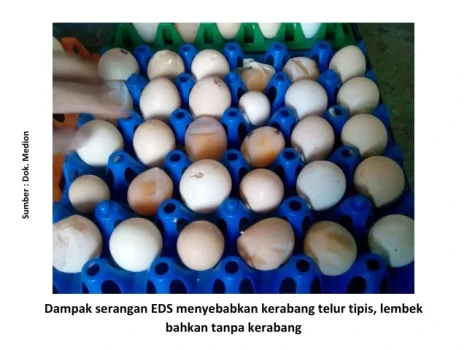
Swollen Head Syndrome (SHS)
One of the diseases that has recently become prevalent is Swollen Head Syndrome (SHS). Initially, SHS infection on farms was often mistaken for Infectious Coryza due to similar symptoms. If layer chickens are affected by SHS, the production drop can reach 5-40%, with a mortality rate of up to 2%. Qualitatively, it impacts the eggshell becoming thin, and the chickens may fail to reach peak production. Similar to respiratory tract infections, the aMPV virus first enters through the respiratory tract mucosa, then the virus undergoes viremia or circulates through the bloodstream, and subsequently, the virus reaches the target organs in reproduction, namely the ovary and oviduct, leading to a decrease in egg production in terms of both quantity and quality. The impact on egg quality is a decrease in production and a pale shell color.
Clinical symptoms begin with respiratory problems in the form of rattling that does not heal with antibiotic treatment. The chicken becomes weak, sneezes frequently, has frothy conjunctivitis, and experiences difficulty breathing (dyspnea). This is followed by a noticeable swelling in the head and mandibular (lower jaw) area. In severe cases, opisthotonus and torticollis (muscle spasms and twisted neck) may also occur. Some of the anatomical pathology that emerges include, upon dissection, the appearance of fluid accumulation (exudate) under the scalp when the head area is examined. Accumulation of exudate is also found in the lower jaw (mandible). If this infection progresses, secondary infections will accompany it; one of the most common secondary infections is colibacillosis. This results in caseous material at the subcutaneous location in the chicken's head. This will worsen and prolong the recovery from Swollen Head Syndrome infection.
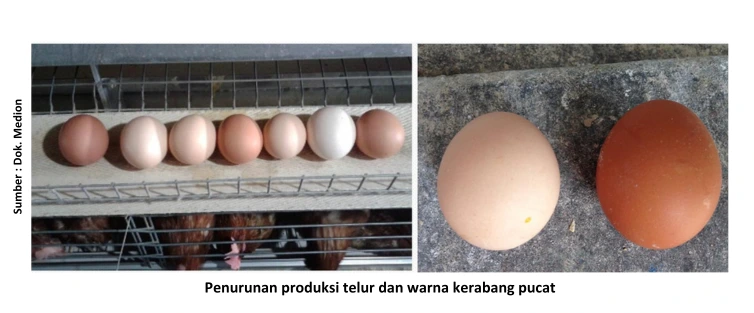
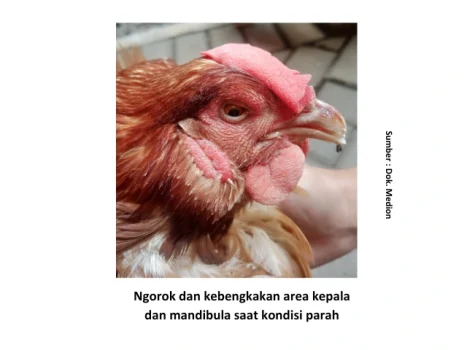
Disease Management
After concluding which viral disease has attacked our chickens and caused egg production to drop, we need to take emergency management actions. The actions taken include:
- Culling/isolating severely affected chickens.
- In principle, viral diseases such as ND, AI, IB, EDS, and SHS cannot be cured once infection has occurred. However, supportive treatment can be provided by administering vitamins such as Fortevit or Vita Stress to help boost the birds’ stamina. Additionally, Reduvir can be given as a herbal supplement to support poultry health and reduce mortality in virus-infected flocks. Specifically for IB cases where kidney swelling is observed, administer Gumbonal for 3–5 consecutive days beforehand.
- Carry out emergency revaccination. Ideally, vaccination should be performed when chickens are healthy. However, in some cases, emergency vaccination can be done to suppress viral spread by boosting the birds’ immunity. The success of this emergency vaccination largely depends on the health condition of the chickens.In IB cases, where the incubation period is very short, emergency vaccination of already sick birds does not guarantee effective disease control. Emergency vaccination can instead be performed in nearby flocks around the affected house. The same approach applies to AI cases.For ND and EDS, after providing supportive treatment, revaccination can be carried out to increase antibody titers, particularly in birds that are still in their productive phase.
- Spray the poultry house and its surrounding environment with disinfectants such as Medisep, Neo Antisep, or Zaldes. This sanitation or disinfection process aims to reduce the population of disease-causing organisms.
- Disinfect drinking water using Desinsep to reduce the risk of disease transmission through water.
- Allow the poultry house to rest for at least 14 days after it has been cleaned. Then, disinfect the house again before starting chick-in or transferring birds into the facility.
Prevention Efforts
Prevention of viral diseases must be pursued through 3 aspects: strict biosecurity implementation, good management practices, and proper vaccination. Additionally, extra prevention can be attempted to support successful egg production. Here is the explanation:
a. Routine Vaccination Program
In developing ND and AI vaccination programs, several aspects need to be considered:
- Right vaccine: The vaccine used should ideally contain a virus that is homologous to the field virus. The physical quality of the vaccine must also be ensured before use, meaning the seal is intact, its form has not changed, the vaccine is not expired, and the label is properly attached.
- Right way: The route and technique of vaccine administration must be correct. Avoid stressful conditions such as rough handling, vaccination during hot weather, and other immunosuppressive factors. Pay attention to vaccine handling from purchase until administration to the chickens. Before administering it to the chickens, do not forget the thawing process. Ensure the administration time is precise. Live vaccines must be used within a maximum of 2 hours, while inactivated vaccines must be used within 24 hours. Before vaccination, the chickens must be healthy and not in an immunosuppressive state.
- Right time: The vaccination schedule must be adjusted according to the high or low challenge in the field and the baseline titer of each farm. Vaccination programs leading up to the production period, such as for ND, AI, IB, and EDS, should be done at least 2 weeks before the start of production and can be revaccinated after the peak production period. The timing for revaccination can also be determined based on antibody titer monitoring results. In layer chickens, ND vaccination is given 4-5 times before entering the laying period. ND revaccination during the production period, if using a live vaccine, can be done every 1-2 months, while if using an inactivated vaccine, it can be done every 2-3 months. AI vaccination in layer chickens is recommended 3 times before entering the egg production period and at least 2 times after peak production. For IB, the ideal vaccination program is a combination of classic IB and variant IB vaccines for broader and optimal protection. In layer chickens, IB vaccination is given 4-5 times before entering the production phase. Subsequently, during the production period, revaccination can be done every 1-3 months if using a live vaccine and every 3-6 months if using an inactivated vaccine. EDS vaccination during the pullet phase is conducted at 15-16 weeks of age or about 2-3 weeks before the production period. For SHS, it can be done twice in layer chickens, which can be adjusted to farm conditions or according to the vaccine manufacturer's recommendation. The complete recommended vaccination program for layer chickens can be seen in the Supplemental Article "Layer Vaccination Program and Its Application."
b. Supplementation
Parasit infestation (worm infection) and stress conditions can also affect egg production. Regularly administer the dewormer Levamid and multivitamins such as Fortevit or Vita Stress to strengthen the immune system. Provide an immunomodulator such as Imustim (before and after vaccination) to help minimize immunosuppressive factors and optimize vaccination results.Additionally, supplement vitamins such as Egg Stimulant. Amino acid supplementation (methionine and lysine), particularly those contained in Aminovit, can further improve egg production and egg weight. Moreover, the herbal supplement Eggstima can help enhance egg production, increase egg weight, and strengthen eggshell thickness.
c. Adequate Nutrition and Drinking Water
Egg size and weight are also influenced by feed nutrients such as protein, specific amino acids like methionine and lysine, energy, total fat, and essential fatty acids like linoleic acid. Provide feed with nutrients that match the chicken's needs in each rearing period, especially for the content of protein, amino acids, energy, fatty acids, calcium, phosphorus, and vitamin D (as they play a crucial role in egg formation). To overcome Ca deficiency, grit (oyster shell flour) can be added to the feed. Change the feed gradually to minimize stress.
Besides vitamins, the addition of premix (Mix Plus) is also important to complete the nutritional needs of the feed, so the poultry's defense mechanism metabolism can run optimally. If the feed quality is poor, add Top Mix to improve its quality. Provide micro-mineral supplementation (trace minerals) in the feed, such as Endomix. In addition to meeting the micro-mineral needs, Endomix can also improve eggshell quality.
If possible, conduct a feed quality test in a laboratory to ensure that the nutritional content of the ration meets the chickens’ requirements. Adequate water intake must also be maintained. The ideal drinking water temperature ranges between 18–24°C. At around 21°C, chickens drink approximately 1.8–2 times more water than the amount of feed they consume. In laying hens, insufficient water intake for just a few hours can negatively affect egg production for several weeks.
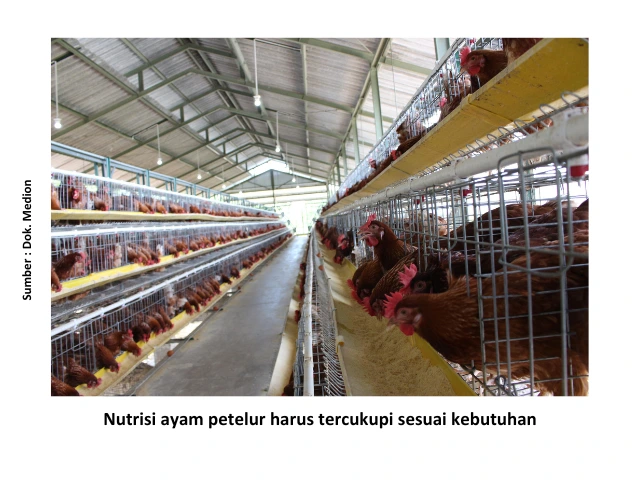
d. Improve management practices and implement strict biosecurity measures
Improve management practices by routinely monitoring body weight, adjusting the lighting program, and creating a comfortable environment throughout the rearing period. Provide adequate drinking water and drinkers, open the curtains widely, install fans, replace wet litter, and spread lime as needed. Additionally, avoid and minimize stress factors such as high temperatures or loud noises. Implementing a closed-house system with automatic ventilation plays an important role in creating a more comfortable housing environment for the chickens.
Proper biosecurity implementation can minimize the entry of pathogens into the chickens’ bodies. This includes isolation, controlling the movement of goods, people, and vehicles entering the farm area, and maintaining proper sanitation. Disinfect the poultry house using Medisep or Neo Antisep to reduce the population of disease-causing organisms.
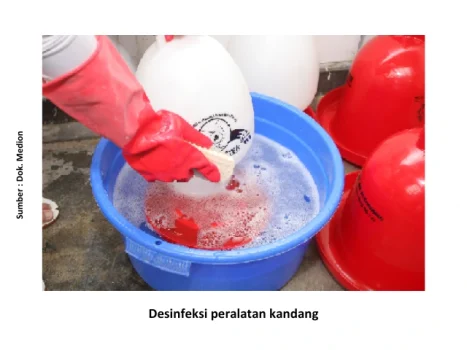
e. Evaluate the quality of pullets
Pullets that do not meet quality standards often experience delayed onset of laying. Good-quality pullets are characterized by body weights that meet standard ranges with a uniformity rate of more than 85%. When entering the production phase (around 18 weeks of age), body weight should reach 1.35–1.65 kg (ISA Brown standard: 1.5 kg). If body weight remains below the standard, the hens will produce smaller and lighter eggs.High flock uniformity ensures that hens begin laying simultaneously, achieving peak production and sustaining it for a longer period. Pullet quality is also indicated by a shank length of approximately 10 cm, a fully developed and red comb, and a pubic bone distance of 2–3 fingers. An upright posture and a well-developed crop are also important quality indicators.Total hen selection or grading can be performed if flock uniformity is very low (<85%). The purpose of grading is to group hens based on body weight—small, medium, and large. Each group is then managed differently; for instance, smaller hens receive additional feed, while larger hens do not, ensuring that all birds reach uniform body weights.
With the information above, it is hoped that poultry farmers can remain vigilant against various viral diseases in layer chickens and implement appropriate control measures to prevent infections from entering their farms. Hopefully, this information will be useful.

